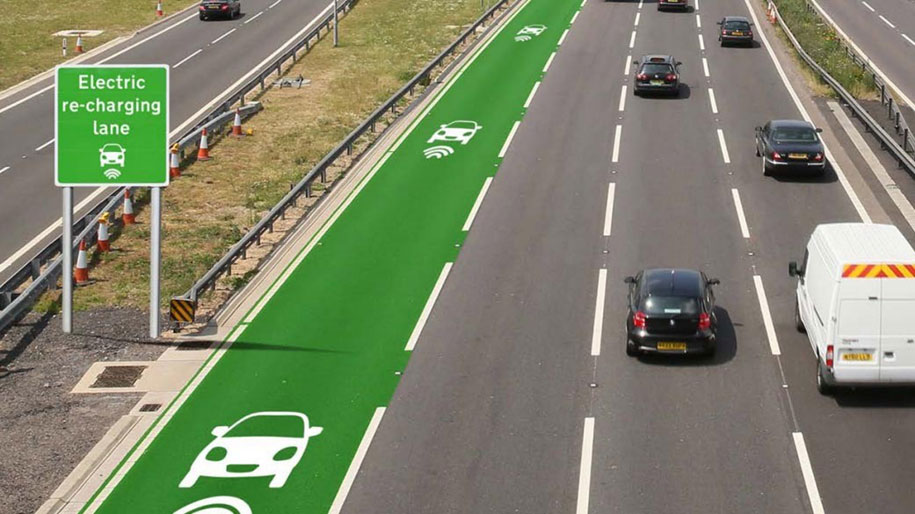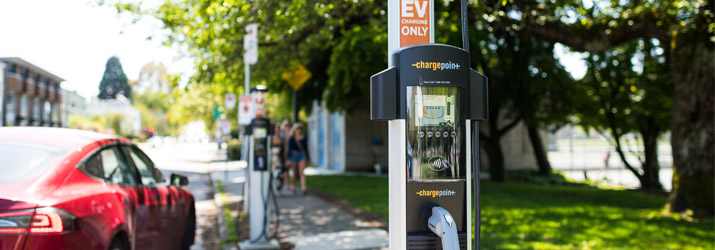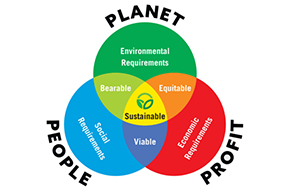
Electric vehicles (EVs) are increasing in popularity for a variety of reasons. Changes in automotive technology, such as improved battery life and lighter materials, as well as financial incentives are making them more reliable and affordable. More consumers are aware of and concerned about the impacts of using fossil-fuel based energy and are interested in alternatives. Recent federal legislation has also focused on reducing fossil fuel use in an attempt to mitigate the effects of climate change. In the next ten years, it is expected that the U.S. will have 3.5 million cars on the roadways. Michigan is already a leader in EV adoption, putting it in the top quarter of states for electric EV registrations. Updates to our transportation infrastructure are needed to keep up with the increasingly widespread use of EVs. This newsletter will be the first in a two-part series. This part will discuss some of the benefits of EVs, what this transition means for planning, and local examples of communities anticipating a switch to EVs. Part 2 will focus on resources to support a cleaner transportation portfolio.
Benefits of Electric Vehicles
There are many reasons to purchase an EV instead of a gasoline-powered vehicle. Their motors out-perform those of gas engines, providing quicker acceleration due to their instant torque delivery. They are also easier and less expensive to maintain, as their fuel source is cleaner and the parts do not require routine maintenance such as oil changes. One of the most commonly cited benefits is that EV’s pollute less than gasoline-fueled cars. Less pollution helps protect human health by reducing emissions of greenhouse gases that warm the planet, thereby also significantly reducing ecological footprints and helping communities meet climate goals. Finally, you may not even know it when an EV goes by – they are much quieter resulting in reduced noise pollution.
Charge on the Go

Charging electric vehicles while traveling long distances or while running errands is a known challenge and barrier to more widespread adoption of these modes of transportation. To combat this, ElectReon is working to make roads that will charge vehicles while they are traveling on them.
In addition to the obvious benefits of not having to stop somewhere to charge an EV, widespread application of this technology would allow for smaller vehicle battery sizes, making vehicles cheaper, lighter, more efficient and have more space for passenger and cargo. It would also eliminate “range anxiety” and dependence on battery performance. Roadway charging would also reduce the need for charging stations, saving land for other uses and eliminating visual hazards.
This wireless charging system will be first piloted in our backyard: in the Michigan Central mobility innovation district in Detroit. The Inductive Vehicle Charging Pilot will be the first public wireless inroad charging system in the U.S. It was announced in September 2021 and is planning to be operational in 2023. Almost two million dollars in funding will come from the Michigan Department of Transportation with the remaining costs covered by ElectReon.
Implications for Planning – Now and Later
Even if your residents or the people who visit your community are not using EVs now does not mean that they won’t be in the future. To ensure that people feel that they have the option to switch (or visit your community), local governments will need to manage multiple logistics and needs. Here are some key places to think about starting this conversation:
- Current EV Needs – Understanding what areas exist where people already have EVs can help identify where charging infrastructure should be installed.
- Equitable Distribution of Infrastructure – Costs of EVs are currently much higher than gasoline-powered cars, so the infrastructure needs demands are currently higher in higher-income neighborhoods. However, lower-income neighborhoods may benefit the most financially and regarding health outcomes by replacing polluting gas-powered vehicles with zero-emission ones. Putting public chargers on the street or in municipal lots close to renters and others who don’t have their own chargers can encourage those without their own infrastructure to consider switching to EVs.
- Getting More Than Just Fuel – Ability to support economic development could also be a consideration when identifying locations for new charging stations.
- Building and Zoning Codes – Codes can be updated to require conduit and wiring for the future installation of charging stations, even if they aren’t being added at the time of construction. Places such as new apartment buildings and hotels should have the wiring or, at a minimum, underground and wall conduit in place, and other supporting infrastructure to put a charger in when it is constructed, as it will be costly to have to rewire later.
- Parking Requirements – In some areas where providing the minimum amount of required parking is challenging due to available land, requiring a certain number of those spaces be charging stations may cause problems while EV use is low. Consider adjusting parking requirements as appropriate.
- Incentives – Action strategies such as allowing EVs to use carpool lanes and reserving some convenient parking spaces solely for EVs can encourage their use in your community.
Local governments can lead by example by switching their fleets over to EVs, installing charging stations at all major municipal facilities, and educating workers and residents on the benefits of switching. With the federal mandate for all federal government fleets to be clean and zero-emission vehicles by 2035 and the Council on Environmental Quality committing to find ways for state, tribal, and local government fleets to benefit from the reach and scale of federal procurement, including lessons learned and technical resources, the time to plan for this transition is now. Therefore, it is important for all communities to begin thinking about how to best integrate EVs and their infrastructure to prepare for an increase in these vehicles in the near future.
Preparing for EVs in Lathrup Village

The City of Lathrup Village recently amended their zoning ordinance to require EV infrastructure (stated as being “EV Ready”) with new multi-family and commercial development. The amendment also encourages at least 5% of new parking spaces be served with Level 2 charging stations.
Besides location, other important aspects of this amendment include:
- Inclusion in calculation for minimum parking requirements
- Lighting and signage
- Protection of charging equipment using bollards and curbs
- Maintenance and repair
Having these regulations in place will help the community be EV ready, and support residents and visitors who drive EVs in being able to get from point A to point B.
Giffels Webster News
Welcome to our new GIS specialist, Deana Daskalova and our new intern, Kyle Cogan. We are happy to have them join our team!


For more information, please contact Giffels Webster at 866.271.9663. www.giffelswebster.com



